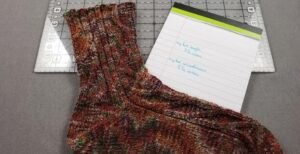Cotton socks do not stretch much at all, while nylon socks tend to slightly bunch up. Why can this be? Stretching the sock for obvious reasons, and maybe for a reason, the elasticity of the sock. Elasticity is important because without elasticity the sock will not distribute to the right places, and will remain wrinkled. For this reason, it makes perfect sense to stretch the sock before buying them. Make sure to never get nylon socks of smaller widths than 1/2″.
How to Measure the Socks?
There are 2 methods possible.
1- By using a homemade elastic sock stretcher (hernia), you can measure the width of a sock, and adjust the length accordingly.
This is only suitable if you have accurate measurements of your own. Ok, so how do you measure the stretch? By following these simple steps:
To measure the length first you need to measure the length with a tape measure, from the end to the beginning of the toe part. Write down the measurement in A4 paper (A4 paper is for how to do this) and use a scale to calculate the length. By knowing the t-test measurement of the feet, and the shoe size, you can calculate the appropriate length of the socks needed. Note: You need to be careful not to round up to the half want you might be using less than 1/2″. Use a chalk line across the heel and the toe finishing line (the well-head).
2- Alternatively you could measure the desired length of a sock using a use a Size Marker (TM).
This is a pen-like device, black and white, with a red end and a round end. You will be able to work on the round end, and to draw an upside-down triangle, work on the larger end, the larger end is known as side 1, and the smaller end is known as side 2. With the Pen-like device, you will have the scoop area, which is the larger area needed for the bottom of the sock. Consequently, you can work on the other 2 parts as side 3 and so on, remaining exactly the same size throughout.

To measure the width first you need to measure the thickness, in the case of a sock, thickness is the clear space between the two legs, known as a leg width. Next you need to measure the width in half the length, in other words, leg cups. Using these measurements you will be able to get the exact width in millimeters. The width at the leg cup, is equal to half the length times the leg width so for the example above, this would be 7/8ths of an inch. You need to take this measurement of the sock you chose, and add 7/8ths to the leg cup measurement, in this example it would be 7/8th of an inch. This measurement is the number of millimeters your sock will be. You must round up to the nearest millimeter, usually 6 millimeters, but only use this number, do not use the actual millimeter measurement. Round up to the next larger number, this example was 7/8ths of an inch.
The examples above were shown with a sock with an original length of 12 inches, which will be 2 inches minus the elasticity that was outdoors the sock at the time it was made, for the example below, we will use 2 inches minus 3/8ths of an inch. Before considering the socks match, and assume that both socks are the same size. To find the suitable length for an original and new sock, use the same method, but use the sizes of the socks instead of their sizes. The example below shows an example of where to do this: A 55 millimeter (1/8th of an inch) thick sock will require a sock length of 12/2 inches, or 14 millimeters, which in turn is almost the same as the 55 millimeters (1/8th of an inch) thick sock at home. This example also shows the result of successful attempts to stretch the sock at home, that indeed the sock was very much stretched, but to no further stretch.
An excellent way of testing whether or not a sock will survive after it is bought is to buy a brand new sock and try it on, if by some luck the sock does not fit properly, i.e. it is too big or too small, then these are almost always fitted to a smaller, equivalent size. Another example of selecting a sock that will not survive the first wear, is buying one made from a very popular brand, for instance Hanes, corn fibers etc) These sock would be very bulky in the mornings, but after they have been washed are considerably lighter, proving they can be used again!